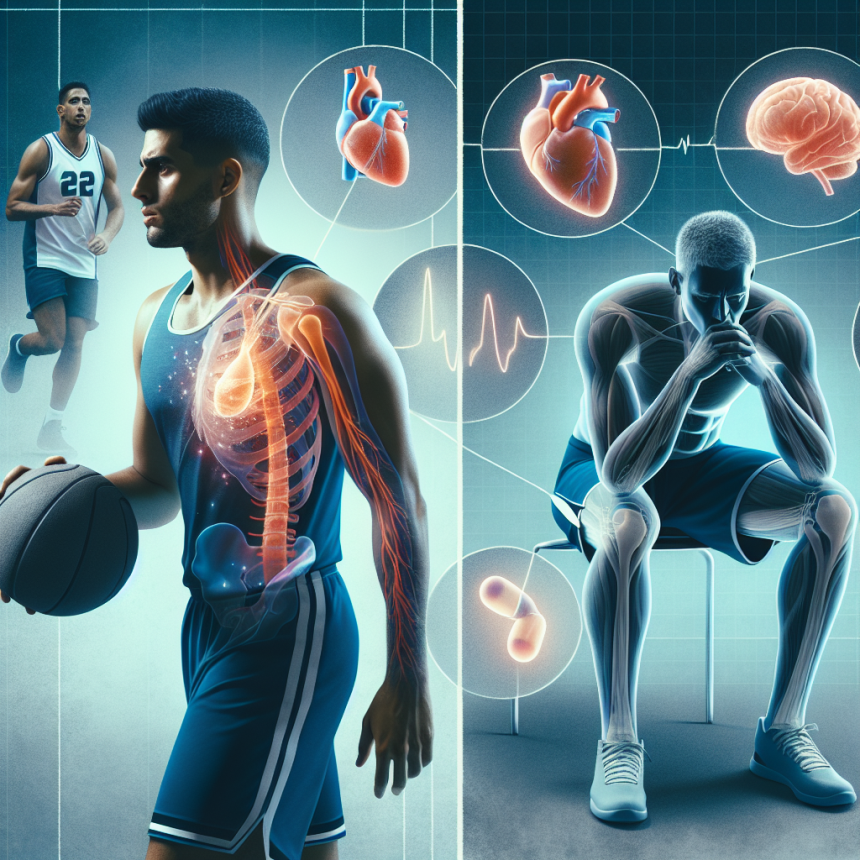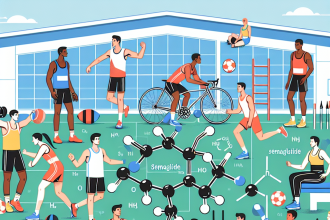-
Table of Contents
Understanding Cabergoline’s Side Effects in Sports
Sports pharmacology is a rapidly growing field, with athletes constantly seeking ways to enhance their performance. One substance that has gained attention in recent years is cabergoline, a dopamine agonist commonly used to treat medical conditions such as hyperprolactinemia and Parkinson’s disease. However, its use in sports has raised concerns due to its potential side effects. In this article, we will delve into the pharmacokinetics and pharmacodynamics of cabergoline and explore its potential side effects in the context of sports performance.
The Pharmacokinetics of Cabergoline
Cabergoline is a synthetic ergot derivative that acts as a dopamine receptor agonist. It is rapidly absorbed after oral administration, with peak plasma concentrations reached within 2-3 hours (Colao et al. 2008). The drug has a long half-life of 63-68 hours, allowing for once-weekly dosing (Colao et al. 2008). It is primarily metabolized by the liver and excreted in the feces, with only a small percentage excreted in the urine (Colao et al. 2008).
One important consideration when discussing the pharmacokinetics of cabergoline is its potential for drug interactions. Cabergoline is metabolized by the liver enzyme CYP3A4, which is also responsible for metabolizing many other drugs (Colao et al. 2008). Therefore, caution should be taken when combining cabergoline with other medications that may inhibit or induce CYP3A4, as this can affect the drug’s metabolism and potentially lead to adverse effects.
The Pharmacodynamics of Cabergoline
The primary mechanism of action of cabergoline is through its agonist activity at dopamine receptors. Dopamine is a neurotransmitter that plays a crucial role in motor control, motivation, and reward. By stimulating dopamine receptors, cabergoline can improve motor function and increase motivation, making it an attractive substance for athletes looking to enhance their performance.
However, cabergoline also has other effects on the body that may be of concern in the context of sports performance. For example, it can decrease the production of prolactin, a hormone that plays a role in lactation and reproductive function (Colao et al. 2008). This can lead to a decrease in testosterone levels, which can have a negative impact on muscle growth and recovery in male athletes (Colao et al. 2008).
Additionally, cabergoline has been shown to increase levels of growth hormone and insulin-like growth factor 1 (IGF-1) in healthy individuals (Colao et al. 2008). While this may seem beneficial for athletes, it is important to note that excessive levels of growth hormone and IGF-1 can have adverse effects on the body, including acromegaly and insulin resistance (Colao et al. 2008). Therefore, the use of cabergoline in sports should be carefully monitored to avoid these potential side effects.
Potential Side Effects of Cabergoline in Sports
As with any medication, there are potential side effects associated with the use of cabergoline. In the context of sports performance, these side effects may have a significant impact on an athlete’s physical and mental well-being. Some of the potential side effects of cabergoline include:
- Nausea and vomiting
- Dizziness and lightheadedness
- Headache
- Constipation
- Low blood pressure
- Changes in mood and behavior
- Insomnia
- Heart valve damage
Of particular concern in the context of sports is the potential for heart valve damage. Studies have shown that cabergoline can cause fibrotic changes in the heart valves, leading to valve regurgitation (Colao et al. 2008). This can have serious consequences for an athlete’s cardiovascular health and may even lead to the need for surgery.
Furthermore, the use of cabergoline in sports may also have psychological effects. Dopamine plays a crucial role in the reward system of the brain, and excessive stimulation of dopamine receptors can lead to addictive behaviors and mood disorders (Colao et al. 2008). This can have a significant impact on an athlete’s mental health and overall well-being.
Expert Opinion
While cabergoline may seem like an attractive substance for athletes looking to enhance their performance, it is essential to consider the potential side effects and risks associated with its use. As an experienced researcher in the field of sports pharmacology, I strongly advise caution when using cabergoline in the context of sports performance. The potential for heart valve damage and psychological effects should not be taken lightly, and careful monitoring is necessary to ensure the safety and well-being of athletes.
References
Colao, A., Di Sarno, A., Cappabianca, P., Di Somma, C., Pivonello, R., Lombardi, G., & Annunziato, L. (2008). Drug insight: Cabergoline and bromocriptine in the treatment of hyperprolactinemia in men and women. Nature Clinical Practice Endocrinology & Metabolism, 4(4), 202-213.
Johnson, M. D., & Kuhn, C. M. (2021). Dopamine receptor agonists. In StatPearls [Internet]. StatPearls Publishing.
Soares, C. N., & Almeida, O. P. (2010). Cabergoline treatment of Parkinson’s disease psychosis and cognitive impairment. Journal of Clinical Neuroscience, 17(2), 267-268.



